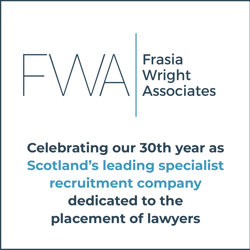When the stakes are no longer moot
In February 2024, I had the opportunity to shadow a solicitor in civil court and this is my firsthand account of my experience. I hope that my experience will demonstrate the benefits of shadowing a qualified solicitor to other students and the role this can play in the transition from academia to practice. Its one thing learning from books in a clinical lecture hall or dusty law library, but is quite another to observe this in an actual courtroom where the lights are bright and the stakes are no longer moot.
I am a 4th year LLB honours student at the University of Dundee Law School and I require formal work experience or shadowing to include as part of my Diploma in Legal Practice application. I asked people I knew if there were any opportunities and I was put in touch with the Glasgow based Asian Lawyers’ Networking Group who introduced me to Ahsan Mustafa, Solicitor at Nolans who practices in commercial litigation and dispute resolution, particularly debt and asset recovery.
I met Ahsan in the foyer Glasgow Sheriff Court at 9:30am on Monday 19th February 2024. As I did not have a Law Society ID card, I had to go through security checks and had my bag scanned. This is a beautiful building with a stunning view of the River Clyde. The saying ‘justice flows like the river’ is very appropriate to this courthouse. Ahsan explained that the courthouse is a listed building and has around 2,000 visitors per day and is widely believed to be the busiest court in Europe. Even as an experienced solicitor, it was clear that Ahsan was still in awe of the building and its history. I suppose this is the kind of reverence you need for your craft in order to endure what can be a very demanding profession.
The interior of the building is just like one would imagine a courthouse to be like in literature and popular culture. There is a bustle and excitement mixed with solemnity and there was a silent awareness of the reality that lives could be changed by the sound of a gavel. There is marble everywhere and the place is literally like a maze.
Ahsan and I took the lift to the civil office on the second floor where Ahsan had a good rapport with the clerical officials and was extremely polite. I found that they knew him well and they told him that his hearing was in court 21. Ahsan explained that lawyers must respect all court staff. From the security guards standing at the entrance to the clerical staff, clerks of court, depute clerks and bar officers. Any bad behaviour is likely to go back to the Sheriff. Solicitors are Officers of the Court who have an important duty to the Court as well as to the their clients. The Law Society of Scotland’s code of conduct for solicitors prohibits any intemperance, in any case. At the end of the day, we are all working toward the same goal of having cases go smoothly and run timeously. Ahsan was acutely aware of the competing pressures the court staff were under and was very empathetic towards them.
As we made our way to court 21, Ahsan explained that this was a case management discussion in a ‘simple procedure’ case. Simple procedure is where the value of a case is to a maximum of £5,000. Anything above that would fall into ordinary cause with the resultant increase in expenses for the losing party.
Although I am not permitted to disclose the identity of the parties to this action, Ahsan was representing the ‘claimant’ which means the party bringing the action. The defender is known as the ‘respond’. Ahsan likened civil litigation to a chess match where the claimant is the white pieces and moves first first and has the job of setting the tone. If done right, the claimant can set the narrative and force the respondent to make admissions and also found on any omissions. Once the opening gambit was launched, however, both parties were on an equal footing and Ahsan explained the concept of fair notice in Scots Law. This means that no party is entitled to ambush another party at a proof as both parties will know each other’s position and what they are required to prove and defend against. This was more pronounced in ordinary cause rather than simple procedure. Apparently, far more technical expertise was needed in ordinary cause. In theory, a party litigant could represent themselves in ordinary cause but this would not be sensible and a person should always instruct a qualified solicitor. Even simple procedure was not ‘simple’ but this was a story for another day.
Ahsan recommended that I borrow the 4th edition of MacPhail’s Sheriff Court Practice from the law library and read about the correct way to frame pleadings, which will aid my understanding of the civil litigation process. Ahsan also recommended reviewing McBryde’s Law of Contract and Gloag on Contract. Ahsan was consistently trying to impart information to me in context along so that I could understand how theory and practice were interconnected. This is something that I really appreciated and this would make my transition into practice much smoother and would make me better prepared for the diploma.
Once we reached court 21, there were several solicitors, witnesses and clients waiting outside. Ahsan explained that they were waiting for family cases and the ‘crowd’ included social works and medical professionals.
We sat in a client consultation room and Ahsan explained what the case is about. This was a case which was paused back in November 2023 whilst awaiting the Inner House of the Court of Session decision in Cabot Financial (UK) Limited v Ryan Bell, XA4/23.
The issue in Ryan Bell was whether proof of receipt, ie a track and trace printout from the Royal Mail website was required when serving confirmation of formal service of a claim form. The issue in the present case was that the court had requested proof of failure of postal delivery before they would process the ‘application for a decision’ on the basis of sheriff officer re-service. Ahsan explained that the ordinary cause equivalent of an ‘application for a decision’ was a ‘Minute for Decree’, which means asking the court to award the case in your client’s favour.
Ahsan gave me a copy of the Inner House decision which ruled that Royal Mail track and trace was not required and also gave me a copy of Part 18 of the Simple Procedure Rules which related to ‘Formal Service’. Ahsan recommended that I read these two documents in my own time and this would also give me an understanding of the ‘presumption of delivery’ in Scots Law.
The Clerk of Court unlocked the courtroom and then Sheriff Mark McGuire entered the courtroom and we all had to stand. Ahsan introduced himself to the court, but he was known to Sheriff McGuire due to previous appearances. Ahsan asked permission for me to observe proceedings, and the Sheriff very kindly agreed.
Ahsan made his ‘submissions’ and the Sheriff agreed with him and accepted Ahsan’s application for a decision. When Ahsan moved for expenses, the Sheriff wanted to restrict these in accordance with the statutory cap on expenses of 10% on claims between £1,501 to £3,000. Ahsan submitted that this would not include outlays and asked for an increased award of expenses, giving reasoning as to why this should be awarded. The Sheriff said he wanted Ahsan to lodge written submissions in advance of a further expenses hearing in June 2024.
At the conclusion of the hearing, Sheriff McGuire had a chat with me and asked about my dissertation, where I studied and what law I was planning to practice. This was a very pleasant conversation and I felt that the court staff and the Sheriff were very supportive of me as a student and wanted me to get the most out of the experience.
Ahsan and I had a quick debrief and he advised that I make notes on the case and my own observations when I got home and while the information was fresh in my mind.
Part two to follow.
By Madiha Waseem – 4th year student at Dundee School of Law






